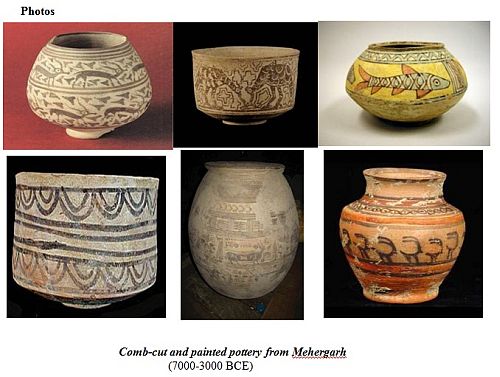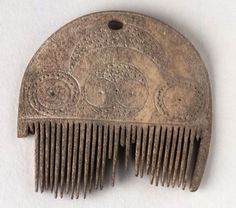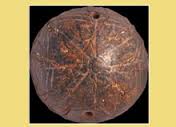It looks like you're using an Ad Blocker.
Please white-list or disable AboveTopSecret.com in your ad-blocking tool.
Thank you.
Some features of ATS will be disabled while you continue to use an ad-blocker.
share:
Very cool thread.
As for the 'ruler' I immediately thought about an architect's scale.
I have one on my desk (I'm not an architect, but I work in the industry) to read building plans.
It's graded into six separate scales, from 1-1/2 down to 3/32 - with each scale divided again into subdivisions.
The ancient ruler could just be a scale. The builder/architect designs the building, and then the scale is replicated in a larger form, say 1.5mm = 1.5 cubits - or whatever unit they choose. Just spit-balling here, but that's where my head went.
That way it doesn't matter at all about the actual measurement of 1.5 cm, just that it can be replicated on a larger scale.
Also, just how rare were 6' tall women at that point in history? That would be worth finding.
As for the 'ruler' I immediately thought about an architect's scale.
I have one on my desk (I'm not an architect, but I work in the industry) to read building plans.
It's graded into six separate scales, from 1-1/2 down to 3/32 - with each scale divided again into subdivisions.
The ancient ruler could just be a scale. The builder/architect designs the building, and then the scale is replicated in a larger form, say 1.5mm = 1.5 cubits - or whatever unit they choose. Just spit-balling here, but that's where my head went.
That way it doesn't matter at all about the actual measurement of 1.5 cm, just that it can be replicated on a larger scale.
Also, just how rare were 6' tall women at that point in history? That would be worth finding.
a reply to: Badgered1
the problem that i find with this kind of reasoning is what are the chances that some ancient person JUST HAPPENED to randomly make a mm and cm based unit of measure?
take a pencil
make a scale of measure
now does it correspond to metric units?
the chances are just to small for me to believe
the problem that i find with this kind of reasoning is what are the chances that some ancient person JUST HAPPENED to randomly make a mm and cm based unit of measure?
take a pencil
make a scale of measure
now does it correspond to metric units?
the chances are just to small for me to believe
Ok ,
After seeing the picture of the so called "ruler", I'm calling unsubstantiated speculative BS.
As was mentioned in a previous post , the tolerencing of the item makes it useless as a measuring device, and it sure looks like a COMB.
And nobody has noticed the real implications of the item lie in what it's made from , ebony.
Ebony is a tropical hardwood, whose nearest source is in tropical rainforests of Southern India.
Given that piece of info and the fact that this city was cultural very from its immediate neighbors , I am going to say that the city was Dravidian.
After seeing the picture of the so called "ruler", I'm calling unsubstantiated speculative BS.
As was mentioned in a previous post , the tolerencing of the item makes it useless as a measuring device, and it sure looks like a COMB.
And nobody has noticed the real implications of the item lie in what it's made from , ebony.
Ebony is a tropical hardwood, whose nearest source is in tropical rainforests of Southern India.
Given that piece of info and the fact that this city was cultural very from its immediate neighbors , I am going to say that the city was Dravidian.
a reply to: punkinworks10
Though six-foot Dravids are a bit of a stretch, going by their burial-urns. Six feet long on average, but there was a lot of stuff put into them besides the bodies... by all accounts.
I am going to say that the city was Dravidian.
Though six-foot Dravids are a bit of a stretch, going by their burial-urns. Six feet long on average, but there was a lot of stuff put into them besides the bodies... by all accounts.
a reply to: Astyanax
Maybe dravidian was a poor choice of words, indus/dravidian is a better choice.
If the city wasnt founded by indus/dravidian people, they had trade contacts with them.
The only other source for ebony in that part of the world is west africa or indonesia, so southern(dravidian) india is the best choice. They might have been dravidian by culture or ancestry but were essentially indo-arrayans?
Maybe dravidian was a poor choice of words, indus/dravidian is a better choice.
If the city wasnt founded by indus/dravidian people, they had trade contacts with them.
The only other source for ebony in that part of the world is west africa or indonesia, so southern(dravidian) india is the best choice. They might have been dravidian by culture or ancestry but were essentially indo-arrayans?
a reply to: beansidhe
I was disappointed that I didn't see a photo of the ruler or the leather with the drawings on it.
That fake eyeball is pretty nice though.
Ok, I saw the pics of the combs now.
Anyone ever use a ruler that you could comb your hair with?
It makes no sense to waste the effort it would take to cut out the gradations on a ruler and weaken it in the process.
It makes entire sense to do that if you are making a comb.
I was disappointed that I didn't see a photo of the ruler or the leather with the drawings on it.
That fake eyeball is pretty nice though.
Ok, I saw the pics of the combs now.
Anyone ever use a ruler that you could comb your hair with?
It makes no sense to waste the effort it would take to cut out the gradations on a ruler and weaken it in the process.
It makes entire sense to do that if you are making a comb.
edit on bu312015-01-21T15:28:04-06:0003America/ChicagoWed, 21 Jan 2015 15:28:04 -06003u15 by butcherguy because: (no reason given)
a reply to: punkinworks10
Hi there, always nice to see you P!
Is this just a coincidence? (Bottom right)

This comes from Mehergarh, Pakistan and is from between 7000-3000 BC. Notice it's comb-cut pottery - hence the comb/ruler?
Hi there, always nice to see you P!
Is this just a coincidence? (Bottom right)

This comes from Mehergarh, Pakistan and is from between 7000-3000 BC. Notice it's comb-cut pottery - hence the comb/ruler?
a reply to: punkinworks10
Sure looks like an ancient comb of some sorts to me too.

source
I had a lot of fun googling ebony
That eyeball looks very peculiar..
Great interesting post! Thanks!
Sure looks like an ancient comb of some sorts to me too.

source
I had a lot of fun googling ebony
That eyeball looks very peculiar..
Great interesting post! Thanks!
edit on 21/1/2015 by kloejen because: (no reason given)
a reply to: butcherguy
Hi, I know, it would be good to see the leather and also the marble cup. I'll add them to the thread when there are some pictures.
Here's a close up of the eye to appease you!


From what I can see on different blogs, it seems to be the site leader who is stating that these combs/rulers are rulers. They're either very accurate combs or slightly less accurate rulers...
Hi, I know, it would be good to see the leather and also the marble cup. I'll add them to the thread when there are some pictures.
Here's a close up of the eye to appease you!


From what I can see on different blogs, it seems to be the site leader who is stating that these combs/rulers are rulers. They're either very accurate combs or slightly less accurate rulers...
a reply to: beansidhe
I love posts like this. I think its kind of eerie, that the
movie Alien III suggests at the beginning of the film
that we have found (or will find) locations where there
are clear signs of intelligent life, far older than we'd
ever speculated.
Just my two cents. Great post OP.
Rebel 5
I love posts like this. I think its kind of eerie, that the
movie Alien III suggests at the beginning of the film
that we have found (or will find) locations where there
are clear signs of intelligent life, far older than we'd
ever speculated.
Just my two cents. Great post OP.
Rebel 5
originally posted by: beansidhe
a reply to: punkinworks10
Hi there, always nice to see you P!
Is this just a coincidence? (Bottom right)
This comes from Mehergarh, Pakistan and is from between 7000-3000 BC. Notice it's comb-cut pottery - hence the comb/ruler?
Beansidhe,
you are awsome, and yes, the pot on the bottom right shows a clear sylistic connection with the pot found at the burnt
city. And good call on the comb cut pottery.
I was right in my assesment that the site might be indus/dravidian derived.
a reply to: punkinworks10
Well, you are awesome too, as is everyone who has replied to this thread!
You know I'm not fond of a coincidence, it does seem like a pretty good match. Great call with Dravidian/Indus, I'm extra impressed!
Well, you are awesome too, as is everyone who has replied to this thread!
You know I'm not fond of a coincidence, it does seem like a pretty good match. Great call with Dravidian/Indus, I'm extra impressed!
The history of "animation" in the pottery found at this site goes back a long way, even to ancient cave art;
How the ancient mind tried to capture motion with a series of linear images or even overlapping images. "Sequential Art" appears in a large number of ancient cultures, from Hopi to these found here in the caves at Lascaux, but if you want to blow your mind, some researchers speculate the overlapping images "moved" when you shifted a torch light about - that the angle the surface was painted on was designed to catch light and illuminate just a portion of the 'moving' image, and reflect another portion when the light shifted.
How the ancient mind tried to capture motion with a series of linear images or even overlapping images. "Sequential Art" appears in a large number of ancient cultures, from Hopi to these found here in the caves at Lascaux, but if you want to blow your mind, some researchers speculate the overlapping images "moved" when you shifted a torch light about - that the angle the surface was painted on was designed to catch light and illuminate just a portion of the 'moving' image, and reflect another portion when the light shifted.
originally posted by: punkinworks10
Ok ,
After seeing the picture of the so called "ruler", I'm calling unsubstantiated speculative BS.
As was mentioned in a previous post , the tolerencing of the item makes it useless as a measuring device, and it sure looks like a COMB.
And nobody has noticed the real implications of the item lie in what it's made from , ebony.
Ebony is a tropical hardwood, whose nearest source is in tropical rainforests of Southern India.
Given that piece of info and the fact that this city was cultural very from its immediate neighbors , I am going to say that the city was Dravidian.
BINGO!!!
This is it. And the teamwork that follows is outstanding, classic ATS.
If Mesopotamia was simply one of many city-based civilizations from 5,000 years ago, we will need to rethink the origins of our urban living.”
Unlikely to happen any time soon. Over thousands of years of book burnings, our true origins are likely lost forever. That is unless, some were well hidden and preserved. Only time will tell if they will be recovered.
a reply to: punkinworks10
Oh, absolutely. Sri Lankan cinnamon in Egyptian mummies and so on.
I don't have a theory about the origins of the Burnt City builders; this kind of thing is not my department at all. But I note that the site is located on the Helmand River, by the Iran/Afghanistan border. The Helmand doesn't flow into the sea, but it is navigable, and may well have been a trade route in those times.
If the city wasnt founded by indus/dravidian people, they had trade contacts with them.
Oh, absolutely. Sri Lankan cinnamon in Egyptian mummies and so on.
I don't have a theory about the origins of the Burnt City builders; this kind of thing is not my department at all. But I note that the site is located on the Helmand River, by the Iran/Afghanistan border. The Helmand doesn't flow into the sea, but it is navigable, and may well have been a trade route in those times.
At first glance of the 'ruler' I thought comb or brush for grooming.
I love that stuff this old is being found still.
Makes you wonder what sort of things werent preserved, that we'll just miss out on seeing!
I love that stuff this old is being found still.
Makes you wonder what sort of things werent preserved, that we'll just miss out on seeing!
a reply to: beansidhe
Hello again! I read somewhere, while back, that Sumerian cuneiform writing was the precursor to modern Asian writing, and when you look at them side by side, it does make total sense that it would be so, that being said in connection with the coming from the East theory.
Hello again! I read somewhere, while back, that Sumerian cuneiform writing was the precursor to modern Asian writing, and when you look at them side by side, it does make total sense that it would be so, that being said in connection with the coming from the East theory.
a reply to: punkinworks10
i have to agree , it does look like a comb or a slide for keeping their hair in place .
and we must consider that this area was once green lush land before the desert moved in and these buildings would have been at risk of fire due to everything being tinder dry .
i have to agree , it does look like a comb or a slide for keeping their hair in place .
and we must consider that this area was once green lush land before the desert moved in and these buildings would have been at risk of fire due to everything being tinder dry .
new topics
-
A Flash of Beauty: Bigfoot Revealed ( documentary )
Cryptozoology: 4 hours ago -
Fire insurance in LA withdrawn months ago
General Conspiracies: 6 hours ago
top topics
-
Fire insurance in LA withdrawn months ago
General Conspiracies: 6 hours ago, 7 flags -
A Flash of Beauty: Bigfoot Revealed ( documentary )
Cryptozoology: 4 hours ago, 5 flags -
Bizarre Labour Party Tic Toc Video Becomes Even More Embarrassing
Regional Politics: 14 hours ago, 4 flags
active topics
-
Planned Civil War In Britain May Be Triggered Soon
Social Issues and Civil Unrest • 30 • : andy06shake -
Regent Street in #London has been evacuated due to a “bomb threat.”
Other Current Events • 8 • : TimBurr -
A Flash of Beauty: Bigfoot Revealed ( documentary )
Cryptozoology • 3 • : BeyondKnowledge3 -
Fire insurance in LA withdrawn months ago
General Conspiracies • 23 • : Flyingclaydisk -
Judge rules president-elect Donald Trump must be sentenced in 'hush money' trial
US Political Madness • 86 • : Flyingclaydisk -
Trump says ownership of Greenland 'is an absolute necessity'
Other Current Events • 86 • : WeMustCare -
The Truth about Migrant Crime in Britain.
Social Issues and Civil Unrest • 44 • : angelchemuel -
My personal experiences and understanding of orbs
Aliens and UFOs • 41 • : WeMustCare -
-@TH3WH17ERABB17- -Q- ---TIME TO SHOW THE WORLD--- -Part- --44--
Dissecting Disinformation • 3982 • : WeMustCare -
Los Angeles brush fires latest: 2 blazes threaten structures, prompt evacuations
Mainstream News • 298 • : Flyingclaydisk
